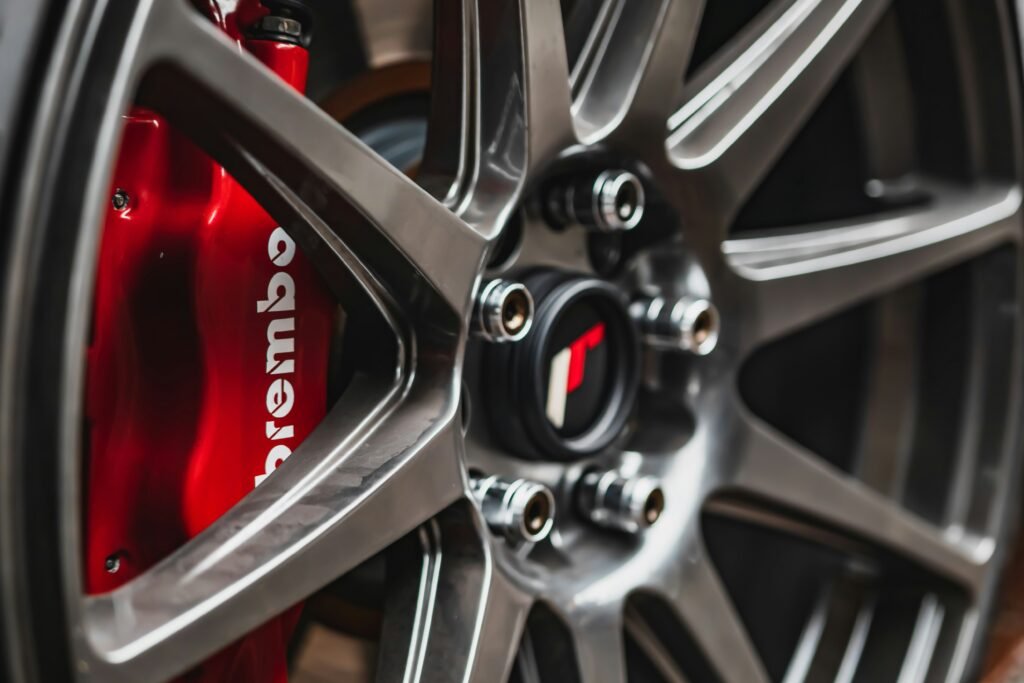Exploring the Latest Advancements in Bicycle Braking Systems
Are you curious to learn about the latest advancements in bicycle braking systems? Let’s delve into the exciting world of cutting-edge technology that is revolutionizing the way we stop on two wheels. Whether you’re a seasoned cyclist or just starting out, understanding the latest innovations in braking systems can elevate your riding experience and keep you safer on the road. So, let’s get rolling and explore the exciting developments in bicycle braking technology!
Evolution of Bicycle Braking Systems
Bicycle braking systems have come a long way since the early days of simple rod-actuated rim brakes. Manufacturers have continued to innovate and improve braking performance, efficiency, and reliability.
Did you know that advancements in braking technology have been driven by a desire for better control and safety on the road? By understanding the evolution of bicycle braking systems, you can appreciate the complexity and sophistication behind the brakes on your bike.
Early Braking Systems
Early bicycles were equipped with rudimentary braking systems, such as the spoon brake, rod-actuated rim brakes, and coaster brakes. These systems provided basic stopping power but lacked the precision and efficiency of modern brakes.
Introduction of Disc Brakes
The introduction of disc brakes revolutionized the cycling industry by providing superior stopping power and modulation in all weather conditions. Disc brakes utilize a rotor attached to the hub and calipers mounted on the frame or fork to clamp onto the rotor, creating friction that slows the wheel.
Types of Bicycle Brakes
Modern bicycles are equipped with a variety of braking systems, each with its unique advantages and disadvantages. Understanding the different types of bicycle brakes can help you choose the right system for your riding style and needs.
Rim Brakes
Rim brakes are the most common type of brakes found on bicycles, utilizing pads that grip the rims of the wheel to create friction and slow the bike. They are lightweight, easy to maintain, and cost-effective but can be less effective in wet conditions compared to disc brakes.
Disc Brakes
Disc brakes have gained popularity in recent years due to their superior stopping power and modulation. They are more consistent in all weather conditions and require less maintenance than rim brakes. Disc brakes are available in two main types: mechanical disc brakes, which use a cable to actuate the caliper, and hydraulic disc brakes, which use fluid to transfer force from the lever to the caliper.
Coaster Brakes
Coaster brakes, also known as foot brakes, are commonly found on cruiser bikes and some children’s bicycles. To activate the brake, the rider pedals backward, engaging a mechanism inside the rear hub that slows the bike. Coaster brakes are simple, intuitive, and require no additional levers or cables.
Drum Brakes
Drum brakes are common on heavy-duty and cargo bicycles, providing consistent braking performance in challenging conditions. They operate similarly to disc brakes but use a drum instead of a rotor for stopping power. Drum brakes are durable and require minimal maintenance, making them ideal for daily commuting and utility cycling.

This image is property of images.unsplash.com.
Latest Advancements in Bicycle Braking Systems
Manufacturers continue to push the boundaries of innovation in bicycle braking systems, incorporating new technologies and materials to enhance performance and safety. Let’s explore some of the latest advancements in bicycle braking systems that are shaping the future of cycling.
Electronic Braking Systems
Electronic braking systems, such as Shimano’s Di2 electronic shifting system, are revolutionizing the way cyclists control their brakes. These systems use electronic signals to actuate the brakes, providing precise modulation and customizable settings. Electronic braking systems are often integrated with electronic shifting systems for seamless control and performance.
Anti-lock Braking Systems (ABS)
Inspired by automotive technology, anti-lock braking systems (ABS) are making their way into the world of cycling. ABS uses sensors to detect wheel speed and modulates brake pressure to prevent wheel lock-up and skidding. ABS can improve braking performance in wet or slippery conditions, reducing the risk of accidents and improving overall safety.
Composite Brake Rotors
Composite brake rotors, made from a combination of materials such as carbon fiber and aluminum, offer significant weight savings and improved heat dissipation. These lightweight rotors enhance braking efficiency and reduce the risk of brake fade on long, steep descents. Composite brake rotors are commonly found on high-end road and mountain bikes, providing a performance advantage for discerning riders.
Integrated Brake Systems
Integrated brake systems combine the brake calipers, levers, and shifters into a single unit, creating a clean and aerodynamic cockpit. Brands like SRAM and Campagnolo offer integrated brake systems that streamline the bike’s appearance and reduce clutter on the handlebars. Integrated brake systems are popular among road cyclists and triathletes looking for a sleek, minimalist setup.
Regenerative Braking
Regenerative braking systems capture and store energy during braking, converting it into electrical power that can be used to recharge an electric bike’s battery. By harnessing the energy generated during braking, regenerative braking systems can extend the range of electric bikes and make them more efficient. This eco-friendly technology is a game-changer for electric bike commuters and enthusiasts looking to reduce their environmental impact.
Aerodynamic Brakes
Aerodynamic brakes are designed to minimize drag and improve airflow around the brakes, reducing wind resistance and enhancing overall performance. Brands like TRP and Shimano offer aerodynamic brake calipers and levers that are optimized for aerodynamic efficiency without sacrificing braking power. Aerodynamic brakes are popular among road cyclists and triathletes seeking every possible advantage in speed and efficiency.
Factors to Consider When Choosing Bicycle Brakes
When choosing bicycle brakes for your ride, several factors should be taken into account to ensure you select the right system for your needs. Consider the following factors to make an informed decision when upgrading or replacing your brakes.
Riding Style
Your riding style plays a significant role in determining the type of brakes that best suit your needs. For example, downhill mountain bikers may prefer powerful hydraulic disc brakes for maximum stopping power, while urban commuters may opt for low-maintenance rim brakes for practicality.
Terrain and Conditions
The terrain and conditions you ride in can influence the performance of your brakes. If you frequently ride in wet or muddy conditions, disc brakes may be a better choice due to their consistent stopping power. Conversely, riders in dry climates may find rim brakes sufficient for their needs.
Maintenance and Durability
Consider the level of maintenance and durability required for your brakes. Disc brakes are generally more low-maintenance than rim brakes, which may require more frequent adjustments and pad replacements. Choose a braking system that aligns with your maintenance preferences and riding habits.
Weight and Performance
Weight-conscious riders may opt for lightweight brake systems, such as carbon fiber composite rotors, to reduce overall bike weight and improve climbing performance. However, performance-focused riders may prioritize braking power and modulation over weight savings, choosing high-end disc brakes for precision and control.
Compatibility and Integration
Ensure that your chosen braking system is compatible with your bike’s frame, fork, and components. Integrated brake systems may require specific handlebars and shifters to function properly, so check compatibility before making a purchase. Additionally, consider how well the brakes integrate with your bike’s overall aesthetics and functionality for a cohesive look.
Budget and Value
Braking systems come in a wide range of price points, from budget-friendly rim brakes to high-end hydraulic disc brakes. Consider your budget and the value you place on braking performance when selecting a system for your bike. Remember that investing in quality brakes can enhance your safety and enjoyment on the road.

This image is property of images.unsplash.com.
Conclusion
As you can see, advancements in bicycle braking systems are continuously evolving to provide cyclists with improved performance, safety, and control. Whether you’re a recreational rider or a competitive cyclist, understanding the latest innovations in braking technology can help you make informed decisions when upgrading or replacing your brakes. By considering factors such as riding style, terrain, maintenance, weight, compatibility, and budget, you can select the right braking system to enhance your riding experience and keep you safe on the road. So, next time you hit the pavement or trail, take a moment to appreciate the engineering marvel behind your bike’s brakes and enjoy the confidence they provide as you navigate your two-wheeled adventures.



